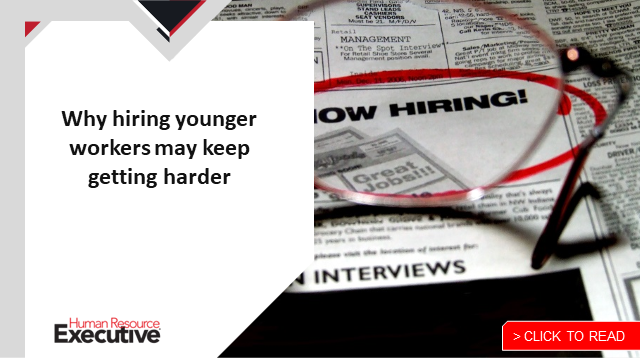There are plenty of theories floating within the HR universe about what “quiet quitting” really means: Is it a new phenomenon that emerged in the wake of the COVID-19 pandemic, or has this employee behavior been around forever under the guise of low-level performance?
Simply, dictionary.com defines “quiet quitting” as the “methods of reducing productivity or the amount of work one performs.” This definition describes that it can be driven by several factors, including “worker dissatisfaction, burnout, disengagement and the trend of deprioritizing work in favor of other aspects of life.”
Several recent surveys have gauged just how deep quiet quitting goes—and shed light on what HR should (and should not) be doing to tame this trend.
For example, Grant Thornton, the accounting and advisory firm, surveyed more than 5,000 U.S. employees this year and found that 49% are disengaged. These employees do not recommend their employer to friends and family as a great place to work; don’t see working at their current employer in six months’ time; and don’t feel inspired by their company to perform at their best.
“We estimate that the 15% with the lowest engagement score are actively disengaged and can be safely called ‘quiet quitters,’ “says Tim Glowa, principal, Human Capital Services at Grant Thornton.
Understanding the data around this trend is an important element for HR leaders looking to combat it. According to the Grant Thornton research, of the identified “quiet quitters,”:
- 61% are female;
- 42% are actively looking for another job;
- 36% are millennials, 34% are Gen X, 21% are Boomers and 7% are Gen Z; and
- 50% are customer-facing.
Alex Seiler, chief people officer at GHJ, a Los Angeles-headquartered accounting and business advisory firm, says these employees—and, importantly, their employers—need to be opening up the lines of communication to address what’s driving their disengagement.
“They should have open communication with their leaders or managers, and on the flip side leaders should prioritize engagement,” Seiler says.
 In particular, companies need to clearly communicate their core mission or values and how that extends to taking care of employees. “If you don’t have either or both, now is the time so your employees know that you take their health and wellbeing seriously,” he says.
In particular, companies need to clearly communicate their core mission or values and how that extends to taking care of employees. “If you don’t have either or both, now is the time so your employees know that you take their health and wellbeing seriously,” he says.
Workforce planning is another critical area in limiting the quiet quitting trend. Making the time and creating the capacity to come up with a strategy is usually the hardest first step.
“But if you don’t do it, you’ll just continue reacting to the business and market demands versus coming up with a strategy that is aligned with your business needs and growth plans,” he says, and that can negatively impact employees.
Leaders need to develop a model that is fair and equitable and helps to demonstrate whether work is being divided equally or not.
“Your employees want to know that you are thinking through what is realistic and/or a stretch versus what isn’t sustainable and will lead to burnout,” he says. “Communicating your plan and strategy early will also quickly build initial trust and credibility for your brand, as your people know you are thinking about their needs and aren’t all talk, no action.”
Modern employee needs are often tied to the growth of the hybrid/remote environment—and employers may be making some missteps here that could be fueling the trend. For instance, Seiler says, if a manager can’t physically see what an employee is doing and when they are doing it, some may question, “are they really being as productive as possible?”
“There are still individuals out there who believe that a ‘face time’ culture is important and so is measuring someone’s productivity,” he says, noting that those are the same employers using tracking and surveillance technology to monitor employee productivity.
“I, frankly, can’t think of a worse idea and a way to lose employee trust,” he says. His recommendation is to instead put in the hard work as a leader: Ask what employees are working on; have in-person/virtual meetings, check-ins and retreats; decide what a capacity model would look like for your team/function. Implementing technology is the easy button—but leadership can’t and shouldn’t be automated.
“Technology doesn’t replace context, coaching, critical thinking and an appreciation for your employee,” Seiler says.
Glowa agrees, noting that employers need to provide both formal and informal training for managers, so they learn to manage not only in the office, but in a remote work environment as well. “Managers need to get to know their employees on a personal level, including family, hobbies and values,” he says.
That ties into efforts to enhance employee wellbeing: A company must understand employees’ needs for broader wellbeing—including physical, mental, emotional, financial and social—and then develop strategies that are tailored to those needs, according to Glowa.
Employers should also strive to differentiate total rewards, he adds. A needs assessment can identify pain points that can then be addressed through a tailored benefits program.
 For instance, “improving the alignment between compensation and individual contribution—paying for performance—will create a strong tie between getting cash compensation right and driving employee engagement,” he says.
For instance, “improving the alignment between compensation and individual contribution—paying for performance—will create a strong tie between getting cash compensation right and driving employee engagement,” he says.
Finally, engagement among today’s workforce can also be enhanced by strengthening approaches to DE&I, Glowa says. A good starting point is conducting roundtables with employees, communicating that these are a “safe place” and an opportunity for leaders to hear employee perspectives of the work experience and provide feedback/suggestions.
“Employees want to work for an organization where they can bring their entire selves to work, where they feel they belong and where they feel they can voice their opinions,” he says. “Creating this sense of belonging helps create a culture of trust.”

